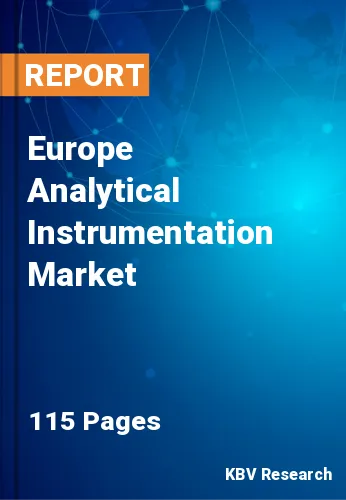
The Europe Analytical Instrumentation Market would witness market growth of 3.6% CAGR during the forecast period (2022-2028).
The pharmaceutical industry needs sophisticated equipment to assist them in complying with increasingly stringent standards because they cannot do their daily business without analytical instruments. Manufacturers are compelled by consumer demand to provide advanced equipment that addresses customers' everyday problems. In order to increase storage capacity as well as output and provide a more effective, healthier, and safer energy source, analytical instruments are increasingly being used in the production of mobile phones, electric vehicles, and energy systems.
One of the main factors influencing the market is this, along with the expanding use of electron microscopy technologies to view objects at scales as low as the atomic level. The rising demand for phytopharmaceuticals, pharmaceutical biosimilars, and regenerative medicines globally further bolster the need for advanced analytical instrumentation.
Furthermore, governments in some nations are launching programs to reduce pollution and test the environment, providing end users with profitable development potential. Likewise, in recent times, the strictness and legislations regarding the safety and testing which have increased the use of gas chromatography methods in food safety testing, quantitative screening of environmental samples, and complicated molecular analysis.
In the field of analytical instrumentation, the European region has developed into a robust market for services and software. Compared to other European countries, Germany has a significant number of groups and associations supporting R&D in the life sciences sector. This helps to keep the demand for analytical equipment high. In addition, the nation is praised for its work in the clinical use of life sciences. Throughout the forecast period, sales of scientific instruments are expected to grow in Europe. The booming biotechnology and pharmaceutical industries in nations like Germany and the United Kingdom are responsible for the demand for analytical equipment in Europe's spectacular rise. These factors are boosting the expansion of the regional market.
The Germany market dominated the Europe Analytical Instrumentation Market by Country in 2021, and would continue to be a dominant market till 2028; thereby, achieving a market value of $4,329.3 Million by 2028. The UK market is anticipated to grow at a CAGR of 2.7% during (2022 - 2028). Additionally, The France market would exhibit a CAGR of 4.3% during (2022 - 2028).
Based on Product, the market is segmented into Instruments, Software and Services. Based on Technology, the market is segmented into Polymerase Chain Reaction, Spectroscopy, Flow Cytometry, Chromatography, Sequencing, Microarray, Microscopy and Others. Based on Application, the market is segmented into Life Sciences Research & Development, Food & Beverage Analysis, Clinical & Diagnostic Analysis, Forensic Analysis, Environmental Testing and Others. Based on countries, the market is segmented into Germany, UK, France, Russia, Spain, Italy, and Rest of Europe.
Free Valuable Insights: The Global Analytical Instrumentation Market will Hit $66.4 Billion by 2028, at a CAGR of 4%
The market research report covers the analysis of key stake holders of the market. Key companies profiled in the report include Thermo Fisher Scientific, Inc., Agilent Technologies, Inc., PerkinElmer, Inc., Illumina, Inc., Bio-Rad Laboratories, Inc., Carl Zeiss AG, Danaher Corporation, Bruker Corporation, F. Hoffmann-La Roche Ltd., and Mettler-Toledo International, Inc.
By Product
By Technology
by Application
By Country
Our team of dedicated experts can provide you with attractive expansion opportunities for your business.
